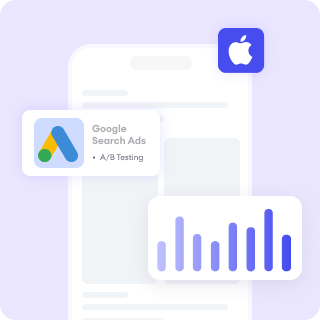A well-crafted meta description can be the difference between someone clicking on your link or scrolling past it. As one of the most visible elements in search engine results, it plays a critical role in driving traffic to your site.
Here's how to write meta descriptions that capture your target audience's attention and improve your click-through rate (CTR).
What Is a Meta Description?
A meta description is a snippet of up to 160 characters that summarizes a web page's content. Search engines often display it below the page title in search results. While meta descriptions don't directly influence rankings, they significantly impact user behavior and CTR.
Learn more: What Is CTR?
Why Are Meta Descriptions Important?
- First Impression: They provide a sneak peek into your page content.
- Encourage Engagement: A compelling description entices users to click.
- Improved CTR: Higher CTR can indirectly improve search rankings due to increased engagement signals.
Tips for Writing Meta Descriptions That Boost CTR
1. Understand Your Audience's Intent
Crafting a meta description that aligns with what users are searching for is key to driving engagement. Start by researching your audience's search intent, whether they want information, solutions, or products, and make sure to tailor your description to meet these needs. Use specific language that resonates with their motivations.
Example: For a page about budget travel, your description might read, "Discover budget-friendly travel tips and hidden gems for your next adventure."
2. Be Clear and Concise
Meta descriptions are limited to about 155-160 characters before being truncated in search results. To make the most of this space:
- Avoid jargon or overly complex language.
- Ensure that your message is immediately understandable and compelling.
Example: Instead of saying, "Our company offers various solutions," go for, "Affordable web hosting with 24/7 support and free domain registration."
3. Incorporate Keywords
Keywords not only make your description more relevant but also help it stand out in search results, as search engines often bold them when they match user queries. Use primary and secondary keywords naturally, avoiding keyword stuffing.
Example: If you're targeting "healthy snacks," you could write, "Browse our collection of healthy, easy-to-make snack recipes for busy lifestyles."
Learn more: How To Integrate Keywords Into Your Content
4. Highlight Unique Selling Points (USPs)
Your meta description is your chance to showcase why your content or product stands out. Highlight benefits or features that users won’t find elsewhere, such as exclusivity, comprehensiveness, or cost-effectiveness.
Example: "Stay ahead in digital marketing with our exclusive trends report for 2025."
5. Use Actionable Language
Encourage users to take the next step by including strong action verbs. Verbs like "explore," "learn," or "get started" instill a sense of immediacy and purpose.
Example: "Find your perfect workout plan and start transforming your fitness today."
6. Appeal to Emotions
Emotional triggers, like curiosity, excitement, or urgency, can make your description irresistible. Use words and phrases that elicit a strong emotional response.
Example: "Unlock the secrets to happiness with these life-changing habits."
7. Include a Call-to-Action (CTA)
Guide the user on what to do next, whether it's clicking through to learn more, shop, or explore. A direct CTA ensures clarity and focus.
Example: "Shop our clearance sale—up to 70% off while supplies last!"
8. Ensure Alignment With Page Content
Your meta description should be an honest reflection of the page content. Misleading descriptions might attract clicks initially but lead to high bounce rates and dissatisfaction. Ensure the tone, promises, and information are consistent.
9. Test and Optimize
If some of your pages are underperforming, test different versions of their meta descriptions to identify what resonates most. A/B testing can reveal whether a particular tone, format, or CTA works best. Periodically revisit and refine descriptions based on analytics.
Common Mistakes to Avoid
- Keyword Stuffing: Overloading keywords looks spammy and reduces readability.
- Being Vague: Generic phrases like "Welcome to our site" don’t offer value.
- Duplicate Descriptions: Each page should have a unique meta description.
- Over-Promising: Misleading descriptions can lead to high bounce rates.
Examples of Effective Meta Descriptions
- E-commerce:“Shop stylish, sustainable clothing for men and women. Free shipping on orders over $50!”
- Blog Post: “Discover 10 easy tips to declutter your home and create a stress-free environment today.”
- Service Business: “Need a reliable plumber? We offer 24/7 emergency services with no hidden fees.”
Continue reading: How To Optimize Photography Or Videography Business Website
Conclusion
Writing effective meta-descriptions requires a blend of creativity, strategy, and a deep understanding of your audience. By focusing on clarity, relevance, and emotional appeal, you can significantly improve your CTR and attract more visitors to your site. Remember, a great meta description isn't just about ranking higher—it’s about connecting with users and giving them a reason to click.
Improve your website performance with FoxAdvert!
If you are looking forward on how to improve your website performance, our professional team of SEO experts at FoxAdvert can help you. Contact us today to start your journey 😊











